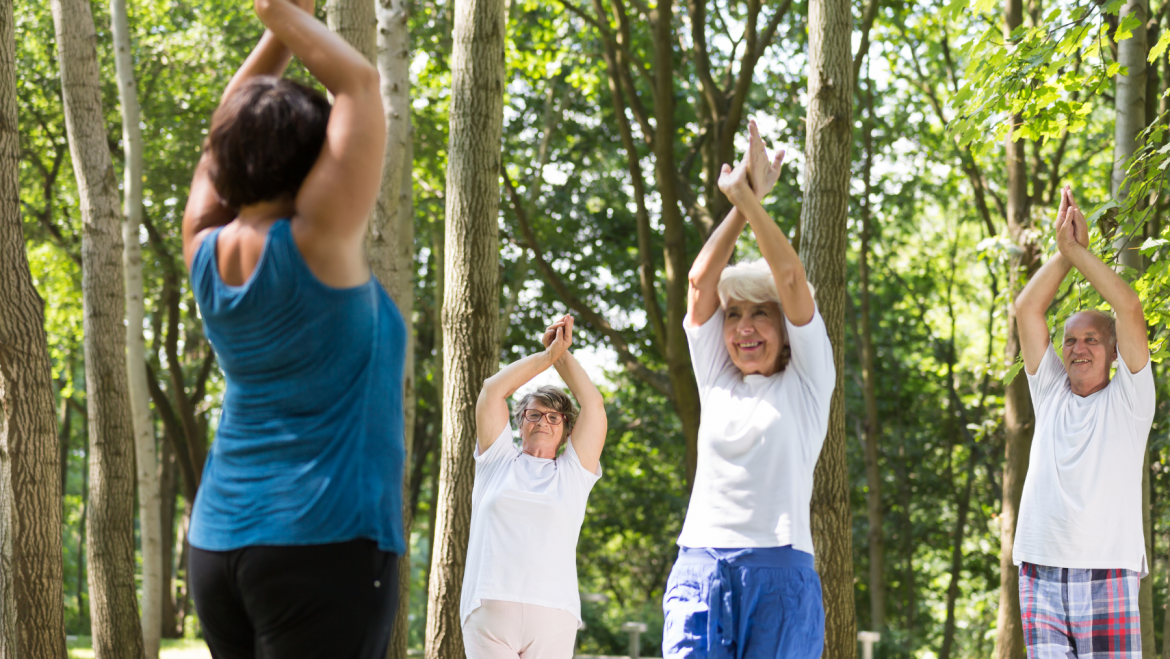Are you moving enough to support a long, healthy life?
While browsing Instagram over the recent holiday break, I encountered a bold statement that rocked my world.
“Sitting is the new smoking.”
While I realize social media platforms have their limits as sources of science-based information, luckily several nutritional experts do post accurate health information on platforms like TikTok, Facebook, and Instagram.
There is indisputable data to support the adverse long-term effects of smoking. New research has demonstrated similar serious negative health impacts of a sedentary lifestyle (simple definition: too much sitting).
Before I saw the “Sitting is the new smoking” post, I never thought to compare the health outcomes of sitting and smoking. However, the more I have considered it, the more my perspective shifted. Maybe sitting is the new smoking.
The American Heart Association, Center for Disease Control and Prevention (CDC), Cleveland Clinic, and Mayo Clinic each have dedicated web pages stressing the importance of movement regarding overall health. According to the American Heart Association, only 20% of adults and teens get sufficient physical activity to support and maintain adequate health. In fact, one study published by the CDC claims that adults spend over half of their day engaged in sedentary behaviors.
Because I’m a clinician at heart and can’t help myself, I dove into the research. What, exactly, are the health consequences of too much sitting? How can one possibly claim it’s as harmful as smoking?
Here’s what the research tells us:
Sitting for long periods of time causes diminished blood flow throughout the body, allowing a build-up of fatty acids. This accumulation of fatty acids is a contributing factor to heart-related diseases and other dysfunction in the body.
Similarly, when we are sedentary, our lymphatic system isn’t pumping. Whereas the cardiovascular system has the heart as the pump, our lymphatic system relies on muscle contractions and physical activity to flow through our body. And, in case you need a reminder, the lymphatic system is like the highway for our immune system!
There is substantial scientific evidence indicating the importance of movement for overall longevity, too. In 2012, researchers developed a simple squat-to-stand test that predicts life expectancy for individuals 51-80 years old better than many standard lab tests (such as the cholesterol and triglyceride markers completed at your routine physical)! This led the researchers to conclude that musculoskeletal fitness is as significant a predictor of mortality as cardiorespiratory fitness. While most of the conventional medical system focuses on biochemical markers of health, they may be missing the importance of physical movement in your overall health picture.
In addition, physical activity and movement support sleep, weight management, hormone production, and balanced brain chemistry! It’s hard to find a part of the body that isn’t positively impacted by movement and negatively impacted by a sedentary lifestyle.
So we would all do well to get moving – that’s easy to agree on. But where do we start? What’s the entry point?
This is an important question to ask now, as January is a time when Americans typically connect (or reconnect) with health goals.
I strongly believe the bridge from a sedentary to an active lifestyle is using movement throughout the day. This is not the same as relying on a strict, traditional exercise routine. We cannot lean on only formal exercise to live a balanced life. One of my favorite statistics on exercise is that less than 3 percent of adults stay in shape through playing team sports. Yet that’s almost exclusively the type of physical activity young people are taught in gym class, community centers, and extracurriculars.
Movement, however, differs from exercise in that it refers to moving the body in any fashion rather than the more strictly defined aerobic and resistance training exercises one finds in sports or at a gym or exercise class.
Where exercise may say weight lift three times a week, movement says take the stairs, park far away from the door when running errands, and take up dancing on Saturdays.
Where exercise says scurry across town in rush hour to make an after-work bootcamp class, movement says run up and down the stairs to counteract fatigue, oxygenating the blood for improved focus and concentration during the day.
Where exercise says to schedule a jog for 20 minutes every morning, movement says stand up and walk, squat, and do calf raises for every 30 minutes you sit. In my research, I found a 2016 study published in Diabetes Care journal claiming that simply squatting and doing calf raises as a mini break for every half hour of sitting improved blood sugar control in people with Type 2 Diabetes! This is a major win for blood sugar control!
Routine interruptions to an otherwise sedentary day are the key to “movement”. While working out has its own benefits, movement throughout the day supports the body’s inherent physiological need for motion.
Let’s all commit together in 2023 to living a more active life!
References:
- American Heart Association Recommendations for Physical Activity in Adults and Kids. www.heart.org. Accessed December 24, 2022. https://www.heart.org/en/healthy-living/fitness/fitness-basics/aha-recs-for-physical-activity-in-adults
- Barlow CE. Association Between Sitting Time and Cardiometabolic Risk Factors After Adjustment for Cardiorespiratory Fitness, Cooper Center Longitudinal Study, 2010–2013. Prev Chronic Dis. 2016;13. doi:10.5888/pcd13.160263
- Daneshmandi H, Choobineh A, Ghaem H, Karimi M. Adverse Effects of Prolonged Sitting Behavior on the General Health of Office Workers. J Lifestyle Med. 2017;7(2):69-75. doi:10.15280/jlm.2017.7.2.69
- Real-Life Benefits of Exercise and Physical Activity. National Institute on Aging. Accessed December 26, 2022. https://www.nia.nih.gov/health/real-life-benefits-exercise-and-physical-activity
- Benefits for Type 2 Diabetes of Interrupting Prolonged Sitting With Brief Bouts of Light Walking or Simple Resistance Activities | Diabetes Care | American Diabetes Association. Accessed January 6, 2023. https://diabetesjournals.org/care/article/39/6/964/29532/Benefits-for-Type-2-Diabetes-of-Interrupting





Add Comment